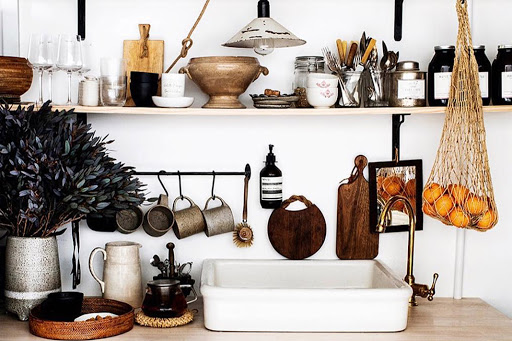
Enjoy Our
Thoughts
List of ways you keep your kitchen sustainable and environmentally friendly

We hear the word sustainable a lot but what does it mean?
“Causing little or no damage to the environment and therefore able to continue for a long time”
Sounds good, but how can we apply this to our kitchen?
What choices do we make in this space that have the biggest effect on the environment?
The biggest ways I believe we can reduce our impact on the environment within our kitchen is through packaging, food sourcing, food waste and cleaning products.
Here are some ideas below.
Food Packaging
The food we buy has more packaging on it than ever before, especially if you do most of your shopping in the supermarket. Finding ways to eliminate this from our life can be hard.
Clearly processed foods have the most packaging. The more we process food the less healthy they are for our body and for the planet. More processing means more factory production, more chemicals, more sugar, more preservatives, and more shipping.
So try and eatas many whole foods as possible where you can. Buy your staples in bulk bags from a wholesaler so you get a better price and less packaging to deal with. Choose fruit and vegetables that are sold loose rather than in plastic packaging.
Read the ingredients
When you are buying food read the ingredients list. Look for products that use whole foods and just a few ingredients. Avoid ingredient lists that include chemicals or items you can’t pronounce or don’t recognize. Keep things pure and simple. Processed foods are designed to be addictive. By sticking to whole foods your taste buds will quickly adapt and begin to appreciate the amazing taste of fresh fruits and vegetables. Bear in mind that fruits and vegetables that taste the best are often the ones that hold the most nutrients.
Source Locally
Eating local is a great way to be more sustainable.When you eat what is grown locally and in season, you are eating more nutrient dense foods, decreasing the demand for food from other regions, reducing food miles, contributing to the local economy, and shrinking your carbon footprint.
Reduce Food Waste
Globally, over 1.3 billion tons of food is thrown away. Over 51% of the rubbish going to landfills is compostable, including food scraps, paper, yard trimmings, and wood.
Unfortunately, the environmental costs of food waste worldwide are staggering, and 3.3 billion metric tons of carbon dioxide released into the atmosphere each year through the production, harvesting, transporting, and packaging of wasted food. Even more troubling – once food waste reaches the landfills, it begins to decompose and emit methane gas. Methane has 21 times the warming potential of carbon dioxide—meaning it has an even greater impact on global warming than CO2.
You can reduce your food waste by buying only what you need.
Take responsibility for your food scraps by returning these nutrient-dense items to the earth. Composting fertilizes future plants, clears space in landfills, and dramatically reduces your personal greenhouse gas emissions. You could even use it to fertilise your own vegetable garden!
Choose meat wisely
If you are a meat eater, choosing your meat carefully is key. Animals are an essential part of the nutrient cycle, and managing them properly within our agricultural systems is critical for restoring soils and balancing the climate. Land is being deforested to support herds of grazing animals, disrupting the natural ecosystem. Buy meat that has been grass fed and from farmers who support regenerative farming practises.
Cleaning products
The cleaning products in our kitchen contain hidden nasties which are not good for our health or the environment.
Did you know the average home contains 62 toxic chemicals?
Of those 62 there are 8 that are most commonly used which are:
Phthalates, Perchloroethylene, Triclosan, QUATS, 2-Butoxyethanol, ammonia, chlorine and sodium hydroxide.
These are known endocrine disruptors, irritants and can cause damage to vital organs as well as promote the growth of drug resistant bacteria.
My suggestion is remove these from your kitchen or anywhere in your house for that matter and try a replacement like the below.
Tea tree oil
For an alternative to chemical disinfectants and sanitizers include antibacterial and antifungal tea-tree oil. Mix a few drops of tea-tree oil and a tablespoon of vinegar with water in a spray bottle for a safe, germ killing, all-purpose cleaner. Add a couple of drops of lavender essential oil for scent.
Vinegar
This is a great all-purpose cleaner great for mirrors and windows and also works as a clothes softener if you add a teaspoon to your washing machine.
If you save up your lemon or orange peels you can add vinegar to them and let them sit for 2 weeks then use as a citrus surface cleaner.
Baking soda
This can also be used as a natural cleaning agent for scrubbing kitchen sides or as an oven cleaner.
Creating a more sustainable kitchen and indeed a more sustainable home is an ongoing process and doesn’t happen overnight. Implement small things slowly, which over time will make a real difference.
X Primrose


